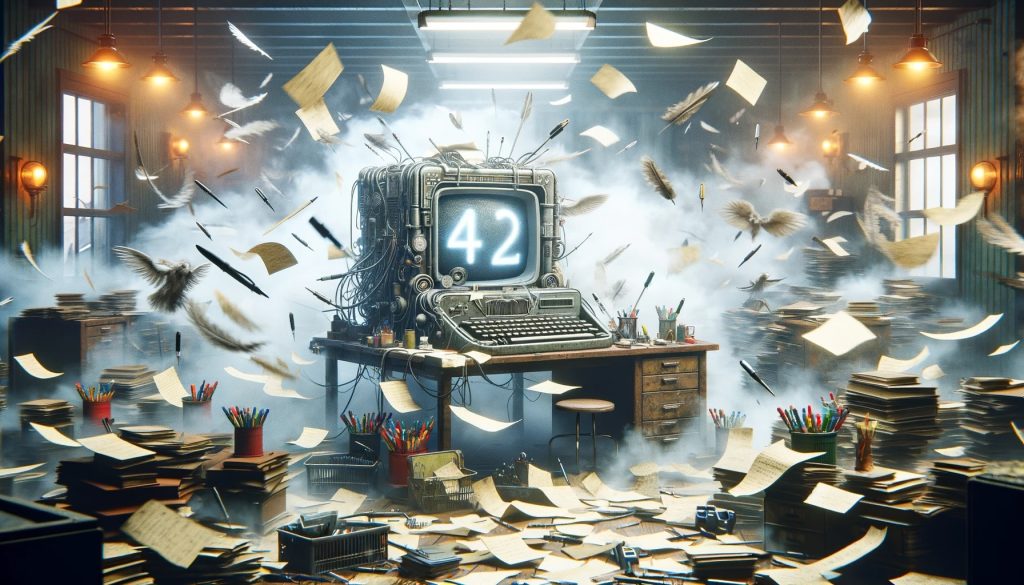In today’s digital landscape, ensuring the originality of content is more crucial than ever. Whether you’re a writer, educator, or business professional, verifying the uniqueness of your text can save you from potential ethical and legal complications. RAID-approved and performance-driven — It’s AI is your solution when it comes to content creation. However, AI-generated content may sometimes resemble existing material unintentionally. That is why using a plagiarism checker plays an essential role in validating that your AI-generated content is genuinely original and free from duplication.
Understanding the Importance of a Plagiarism Checker for AI-Generated Content
AI tools have revolutionized content creation by delivering fast, efficient writing solutions. Yet, even the most advanced AI can generate text that echoes existing sources due to the nature of its training data. This makes it necessary to employ a plagiarism checker to scan AI-produced material thoroughly. A plagiarism checker helps detect similarities and ensures the authenticity of your content, preventing inadvertent copying. By integrating this step into your workflow, you safeguard your credibility and maintain high ethical standards.
Preparing AI-Generated Content for Plagiarism Checking
Before submitting AI-generated content to a plagiarism checker, it’s important to prepare the text properly. Clear formatting and removing unnecessary elements like excessive hyperlinks or coding artifacts improve the accuracy of the scan. When your content is clean and well-structured, the plagiarism checker can perform a more precise analysis, identifying potential matches more effectively. Preparing your content well ensures that the tool’s results are reliable and actionable.
Uploading or Pasting AI Content into the Plagiarism Checker
Most plagiarism checkers offer flexible options for submitting content. You can either upload a document file or paste the text directly into the tool’s input area. For AI-generated content, it’s often faster to copy and paste, especially if you’re working with drafts or text editors. Make sure that the content is complete and correctly formatted before starting the process. This step ensures that the plagiarism checker can assess the full scope of the material without missing any parts.
Analyzing Plagiarism Checker Results to Verify Originality
After submitting the AI-generated content, the plagiarism checker scans extensive databases of published work, websites, and academic papers. The results usually highlight passages that match other sources, allowing you to see exactly where similarities occur. This transparency is crucial for understanding the nature of any flagged content. By examining these results, you can verify the originality of the text and identify areas that may require rewriting or citation.
Addressing Plagiarism Checker Findings Effectively
When the plagiarism checker reveals duplicated content, it’s important to act promptly. Review the highlighted sections carefully to determine if they are genuinely problematic or if they involve common phrases or technical terms. For AI-generated content, rewriting or paraphrasing flagged passages can often resolve issues. Additionally, providing proper citations or references where necessary reinforces the credibility of your work. Utilizing a plagiarism checker regularly encourages the habit of producing authentic and responsible content.
Enhancing the Quality of AI-Generated Text Using a Plagiarism Checker
Beyond detecting copied content, a plagiarism checker serves as a valuable tool to improve the overall quality of AI-generated writing. By revealing unintentional similarities, it encourages refinement and creativity, pushing users to create more original and engaging material. This iterative process of generating, checking, and revising enhances the content’s uniqueness and value. Incorporating a plagiarism checker into your routine elevates the standard of your AI-generated content consistently.
The Role of a Plagiarism Checker in Maintaining Ethical Content Practices
Using a plagiarism checker is more than a technical task; it represents a commitment to ethical standards in content creation. Whether the text is human-written or AI-generated, originality respects intellectual property rights and fosters trust between creators and audiences. When you verify AI-generated content with a plagiarism checker, you demonstrate responsibility and integrity. This practice upholds the reputation of your work and contributes positively to the broader content ecosystem.
Choosing the Right Plagiarism Checker for AI-Generated Content
Not all plagiarism checkers perform equally when handling AI-generated text. Some tools are more adept at recognizing subtle similarities or paraphrased content, while others rely on basic keyword matching. Selecting a plagiarism checker that is advanced, reliable, and user-friendly enhances your ability to verify originality effectively. Factors such as database size, update frequency, and reporting clarity should influence your choice. Investing in a quality plagiarism checker ensures your AI-generated content remains trustworthy and plagiarism-free.
Continuous Verification: A Best Practice with a Plagiarism Checker
Originality verification is not a one-time task but a continuous process, especially when working with AI-generated content that evolves through multiple drafts. Repeated use of a plagiarism checker helps track changes and ensures each version maintains its uniqueness. This ongoing approach protects you from accidental plagiarism and builds confidence in the content’s authenticity. Regularly applying a plagiarism checker keeps your work aligned with the highest standards of originality and quality.
You may also like
-
인천출장마사지 인천출장안마, 자택에서 받는 프리미엄 서비스
-
Affordable and Creative Video Production Service in Toronto
-
Build a Winning Deck with Real Pokemon Cards India – Genuine Cards Guaranteed
-
Top 영상업체 Strategies to Elevate Your Film Production Quality
-
Insights into the Africa Russia Summit News: Key Developments and Future Prospects
